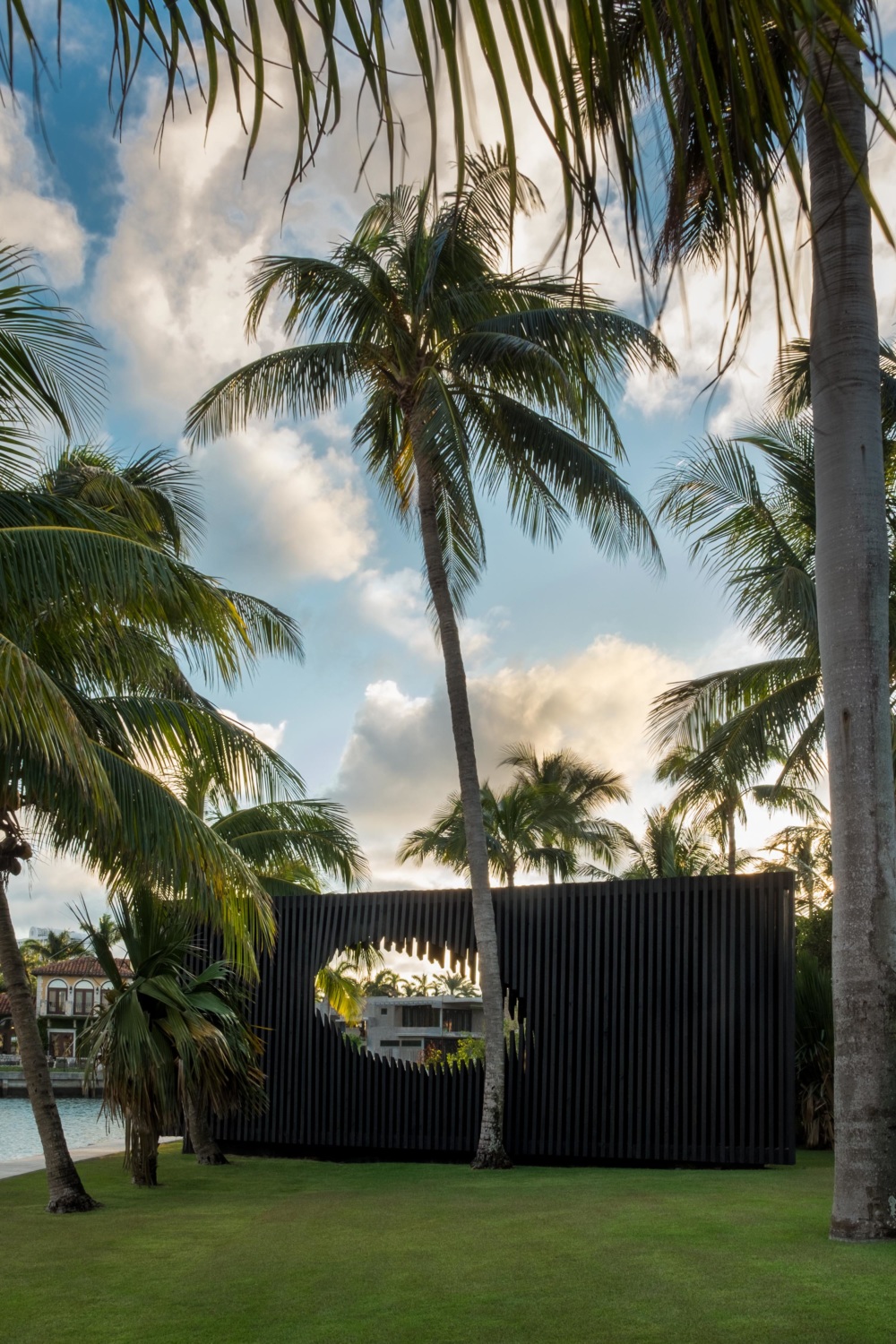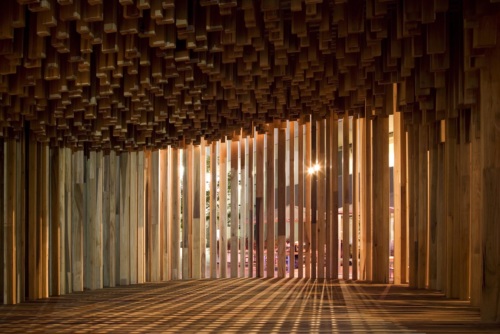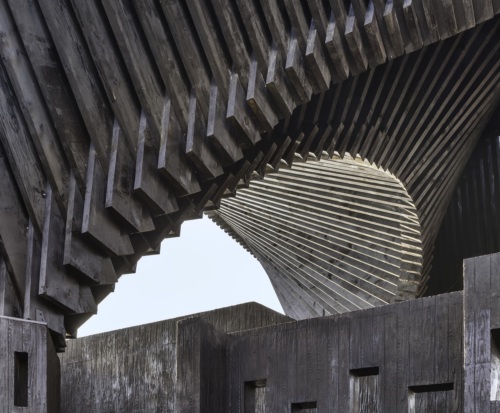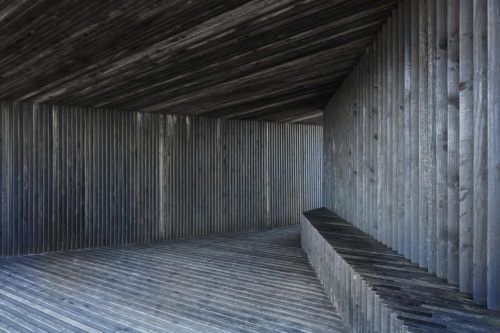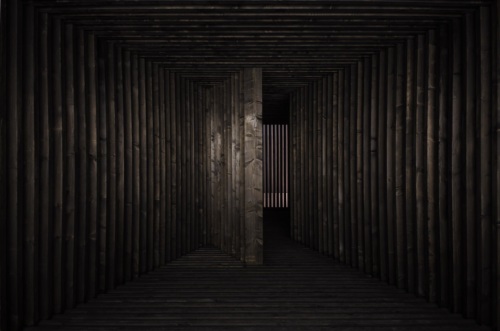
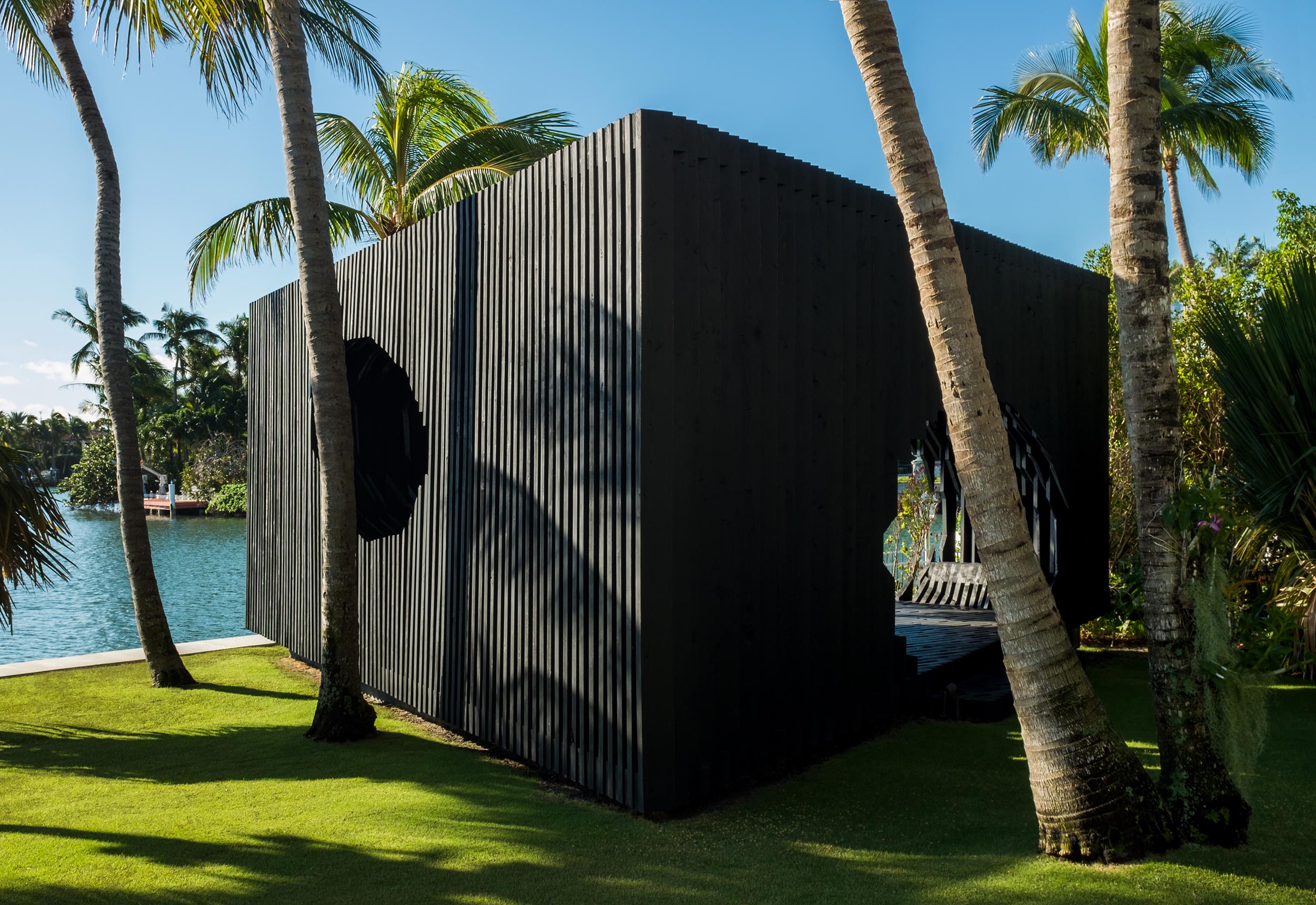
Genesis Pavilion
Miami, Florida, USA
- Status
2011 - Category
Pavilions - Client
Design Miami - Design Architect
Adjaye Associates - Institution
Design Miami - Awards
Award for Culture, Condé Nast Innovation and Design Awards, 2011
Technical Info +
Using a single material, the pavilion establishes materiality, light, space and ornament. Like a giant piece of architectural furniture, it will fuse structure, seating, window and doors into a single gesture, integrating enclosure, aperture, views, respite, meditation and community. - David Adjaye
Designed to provide visitors with an immersive experience, Genesis is a complete environment, which integrates enclosure, aperture, views, respite, meditation and community. Like a giant piece of architectural furniture, the Design Miami/ commission has enabled Adjaye to combine structure, seating, window and doors into a single gesture for the first time.
The pavilion is a triangular prism measuring 10m x 10m x 10m x 3.6m, located at the entrance to the fair. It ushers visitors into the courtyard space upon arrival and with its curved window offering strategic views of the galleries, is also the point of departure, a final gathering space as visitors leave the fair. Comprising a series of timber frames that form the roof, flooring and walls, these elements work together and provide the overall structure through compression.
The internal space is formed by carving out an oversized ovoid shape from the centre. This distorted shape is set at an angle and abuts the perimeter to form the exit, entrance and window. The seating is established by a secondary subtraction from the interior – which repeats the distorted ovoid, creating a platform along the cut-away timber frames. While the timber frames are not completely fused, they are used to modulate light through compression and additional filler pieces. This modulation allows filtered light to stream into the space from the exterior roof, providing a dynamic filigree of shadows. An opening in the roof provides additional lighting to the interior spaces creating a dramatic light well that draws visitors to the pavilion’s core.
